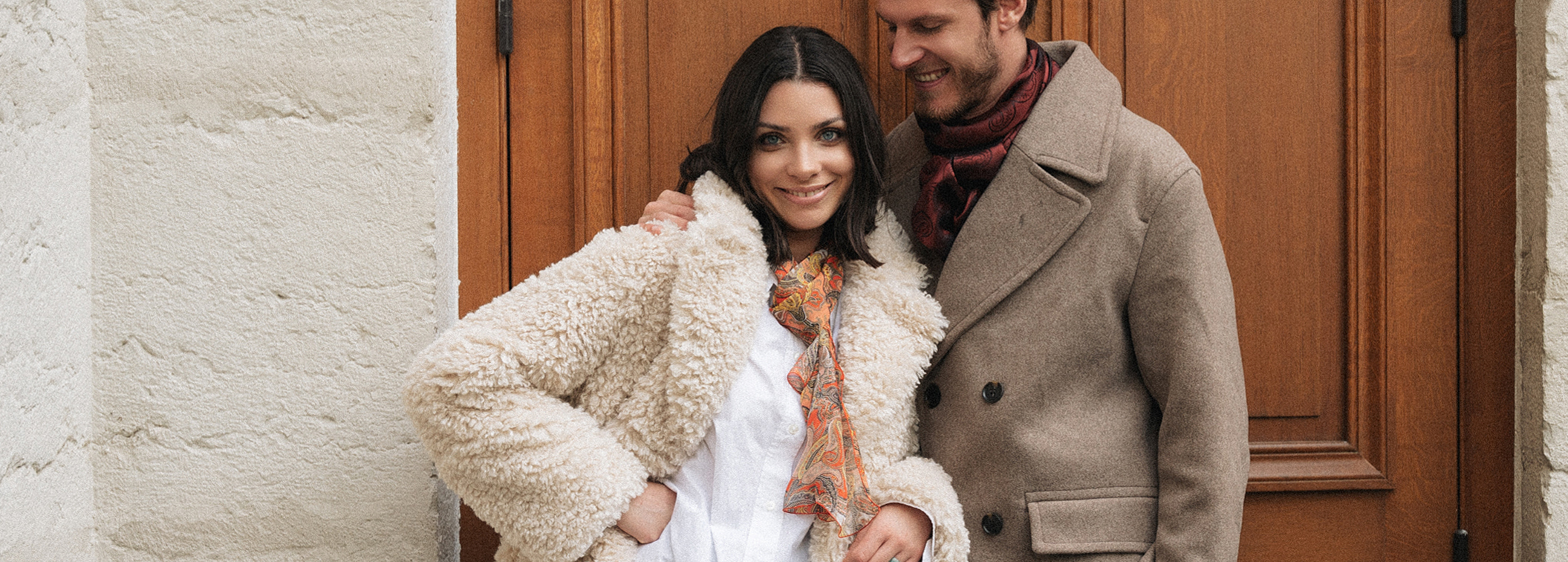How to choose a quality silk scarf
Silk scarves are essential accessories for completing your look. While they protect us from the cold and heat, they also add a touch of style to our outfits. Choosing a quality silk scarf deserves attention. Discover some tips for recognizing beautiful silk!

Several types of silk thread
First of all, we must distinguish between several types of silk thread, the most common of which are mulberry silk and Tussah silk.
Mulberry silk, which is the highest quality silk, is produced by worms raised on mulberry leaves. This silk is the most beautiful, it is very regular, its softness and its luster are incomparable. It is perfect for clothing and is also widely used in the luxury industry.
While Tussah silk is produced by worms fed on oak leaves, it is commonly called wild silk. The latter is renowned for its good durability, and for its more irregular appearance. It can be used for furniture because it is sufficiently resistant to friction. India and China are the largest producers of wild silk.
Quality of silk cocoons
The mulberry silk produced by the Bombyx worm is an extremely soft, smooth silk with a subtle shine. The quality of silk thread is rated with the scale of grade A, 2A, 3A, 4A and 6A. Grade 6A represents the highest level of silk quality. This means that the silk is a selection of the upper cocoons which unroll in a long, regular thread. Grade 6A quality silk is made from the longest silk fibers available. When the silk thread is pulled from the cocoon, the longer it is, the better the quality.
Very small threads will have a rough feel to the touch once woven. The longer the thread, the softer the fabric will be. Here are some figures: We pull around 800m of thread from a cocoon and its diameter decreases between the start and the end of the cocoon. To make 1 kg (2.2 lbs) of silk thread, you need around 11 kg (24.2 lbs) of raw cocoons. Did you know that a silk thread is as strong as a steel wire of the same diameter? Frenche scarf uses only grade 6A silk to make our scarves.
Quality of silk fabrics
As far as 100% silk fabrics, we also must talk about about the quality of the silk in relation to the thickness of the fabric. This thickness of silk is measured in mommes, a rating similar to thread count in cotton fabrics. It is the ratio between the weight and the surface area of the fabric: 1momme = 4.3056n g/m2. There are silk fabrics from 4 mommes to 30 mommes. The larger the number, the heavier the fabric. French scarf offers 5 momme silk chiffon stoles to guarantee their lightness and transparency.
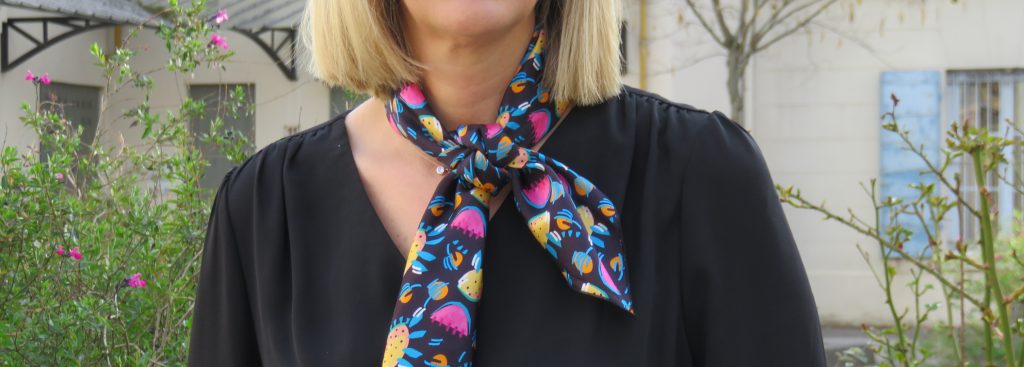
Different types of quality silk fabric
We can distinguish between:
Monochrome silk fabrics
This includes muslin, silk taffeta, and silk satin. These fabrics have different thicknesses and different weaving processes. Silk satin is fluid and supple, rather heavy and without any transparency. Silk taffeta is crisp, it is a fabric with good hold and very pleasant to wear, widely used by haute couture to make wedding dresses or evening dresses. Silk chiffon is very light and transparent, woven with the finest thread that can be made. Perfect for scarves, it can be dyed in all colors. It is ultra soft to the touch!

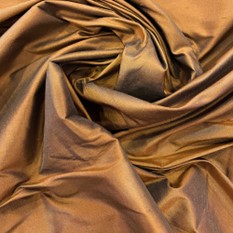

Jacquard silk fabrics
Jacquard is a weaving technique which allows weaving fabrics together to form patterns. The patterns are obtained by crossing the warp threads and the weft threads following a design. Joseph-Marie Jacquard, a Lyon native and the son of canuts (traditional Lyon weavers), developed a mechanism in 1801 allowing the weaving of complex designs which previously required one or more assistants alongside the weaver. These designs were made in the form of punched cards which are the origin of today’s computer programs. La Fabrique d’écharpe has inherited this ancestral Lyon savoir-faire and still has Jacquard looms to manufacture its collections of scarves and scarves.
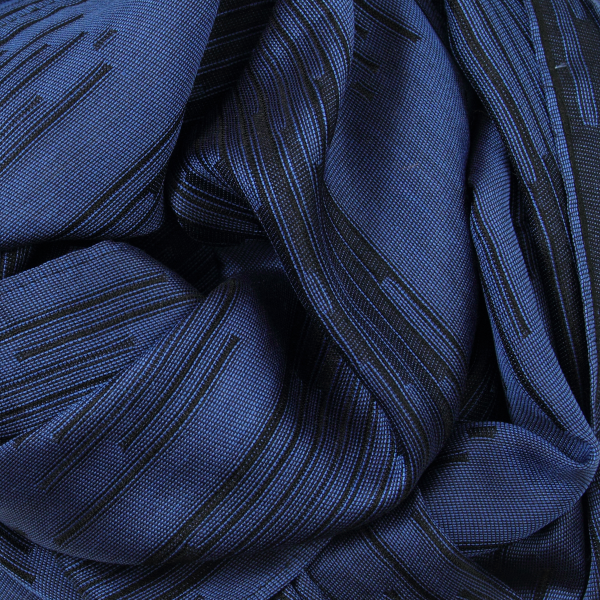
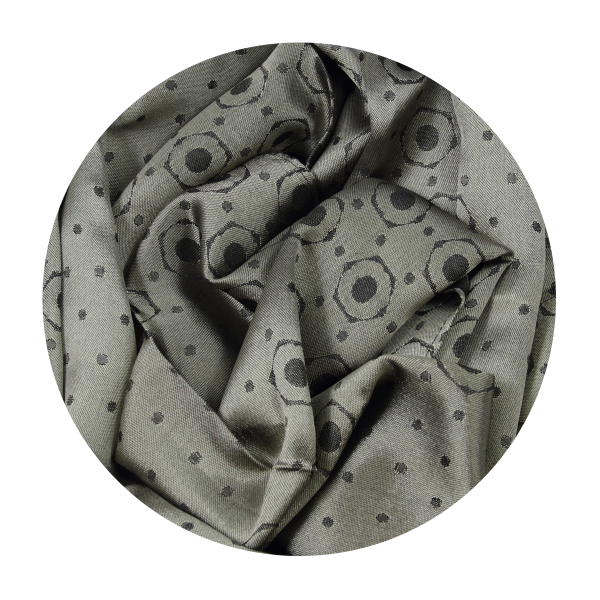

Printed silk fabrics
Silk is well suited to printing. Several techniques are used on plain fabrics, the main ones of which are screen printing, rotary frame printing, block printing, and today digital printing is developing more and more. The latter is an innovative technique which is like printing on paper, with no limit on the number of colors, on the quantity of scarves produced, and can be used on any thickness of scarf, from the thinnest to the thickest.

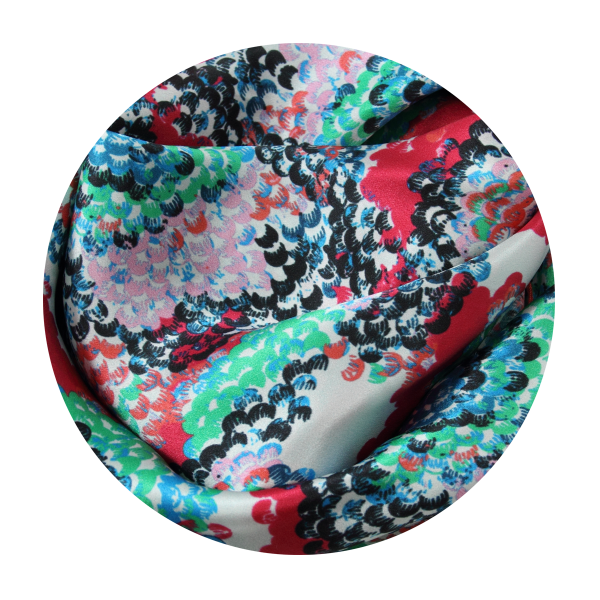
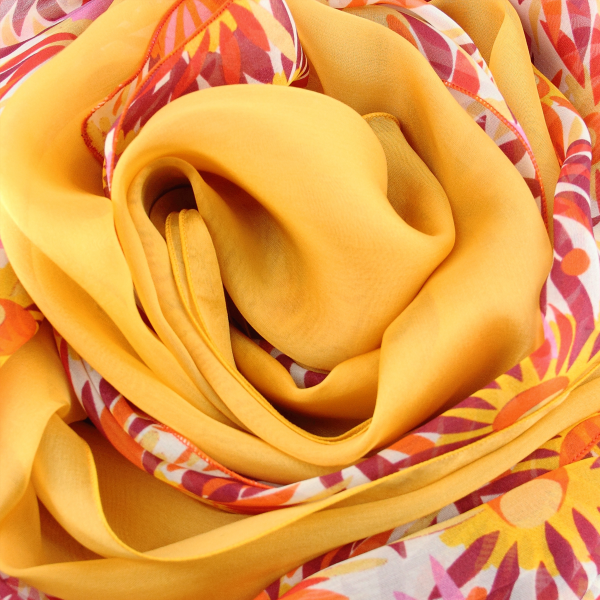
Silk blend scarves
Silk blends with other materials such as cotton, wool, or cashmere, cotton/silk, wool/silk, and even cashmere/silk compositions have been very popular in recent seasons. They combine the qualities of these noble and natural materials all while keeping costs down. These unique fabrics combine shiny and matte effects, embossed effects, silky touches, and softer feels. A countless number of unimaginable creations are now possible!

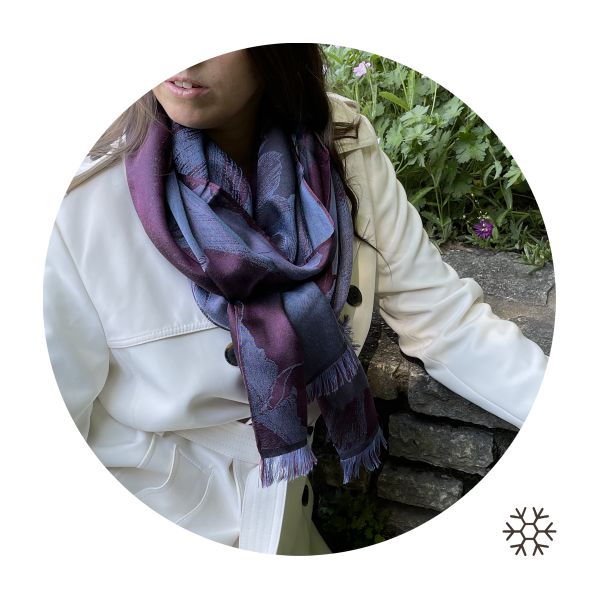
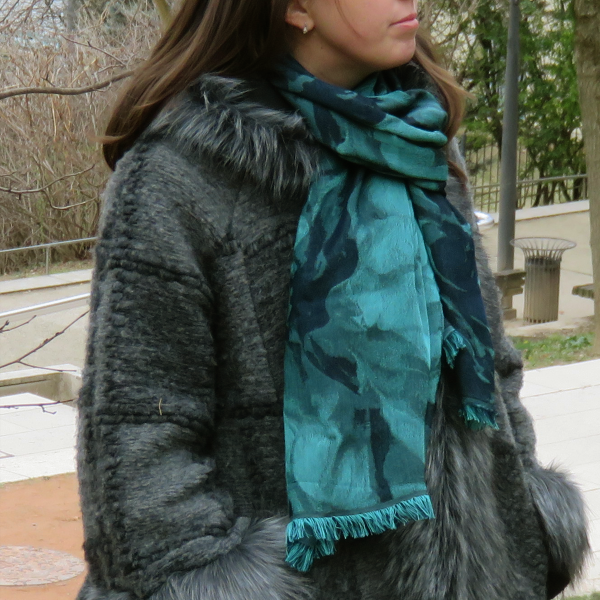
And there are many other types of fabrics with silk: jersey or knitted silk fabrics, crepe de chine, chiffon silk, silk twill, brocades, brocatelles, and brocaded fabrics; the list goes on and on.
The virtues of silk
Silk as a material has interesting thermoregulatory properties. It is warm in winter and cool in summer, making a silk scarf a versatile accessory to use all year round.
In addition, silk is hydro-protective, it absorbs moisture and lets the skin breathe.
Due to its natural composition and softness, silk is also hypoallergenic and antibacterial. People with sensitive skin or who suffer from allergies can get a silk scarf without fear of irritation or itching.
Silk regenerates the skin and hair because it limits breakage, frizz, and hair loss thanks to its protective and regenerating protection.
Quality silk fabrics are anti-static, they never stick to the skin.
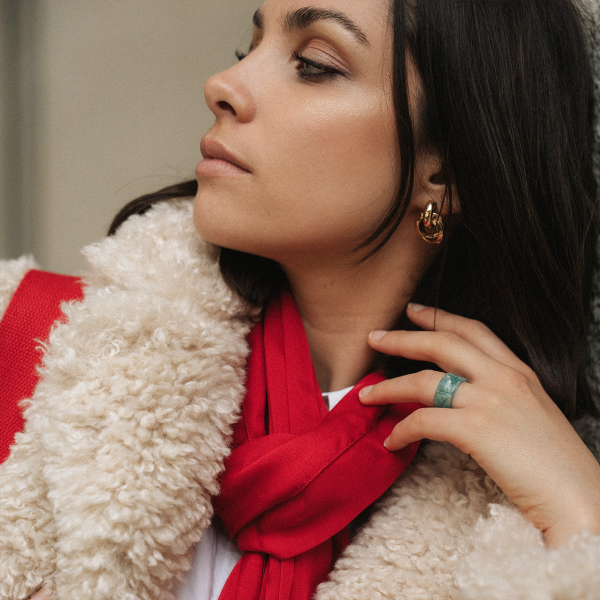
How to identify quality silk
The most sure way to check silk is to burn part of the fabric. You should know that all natural fibers such as silk react in the same way to fire. When the yarn or fabric is burned, the combustion stops as soon as the flame source is removed. There is an odor similar to that of burning hair and the residue appears in the form of tiny balls that can be crushed into powder. As such, silk is not very flammable, just like wool.
However, this technique requires damaging part of the fabric. Otherwise, to recognize silk, you have to handle the fabric, touch it, crumple it, and observe it.
Visually, silk has a natural shine different from other synthetic fabrics. Natural silk reveals a softer shine than artificial textiles.
It should feel soft, smooth, and silky and give a feeling of greater flexibility than a synthetic textile.
It must be admitted, however, that artificial and synthetic textiles have evolved a lot in recent years. It is more and more difficult to distinguish real silk by a simple touch of the hand. A final test can help you: simply wet the fabric, natural silk adheres very easily to the skin while synthetic silk is noticeably less clingy.
Finally, look at the price! Avoid buying clothes that are supposedly made of silk but are too inexpensive. Ask yourself if the price is too low, as silk is a very expensive raw material which costs between €70 and €150 per kg!
This rich material offers a unique texture that cannot be compared to any other. Silk scarves stand out for their elegance and refinement, allowing you to add a chic touch to any outfit.
To conclude
Thanks to its luxurious appearance, silk makes it possible to produce fabrics of great finesse and exceptional color intensity. Given the health and comfort benefits of silk, silk scarves or scarves made with silk are essential to your wardrobe. We invite you to discover our site where you will undoubtedly find a silk scarf to your liking.

Write to us





